|
|
 
 Life in Ancient Mesopotamia Life in Ancient Mesopotamia 
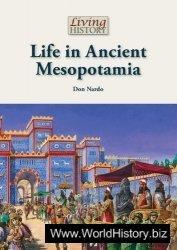 Author: Don Nardo Life in Ancient Mesopotamia (Living History) Referencepoint Press 2013 Format: PDF Size: 6.6 Mb Language: English Living in ancient Mesopotamia could sometimes be harsh and dangerous, yet it could also be comfortable and fulfilling because the early inhabitants invented cities, writing, and other key elements of civilized life. Farming, trade, the home, education, womens roles, religious beliefs, technology and transportation are only some of the topics discussed in this revealing social history.
 
 Ancient Mesopotamia: New Perspectives Ancient Mesopotamia: New Perspectives 
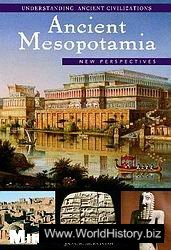 Ancient Mesopotamia: New Perspectives Author: Jane R. McIntosh ABC-CLIO Understanding Ancient Civilizations 2005 ISBN: 1576079651 Format: PDF Size: 9,6 МВ Language: English Pages: 415
 
 The Language of Empire: Rome and the Idea of Empire From the Third Century BC to the Second Century AD The Language of Empire: Rome and the Idea of Empire From the Third Century BC to the Second Century AD 
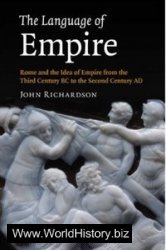 The Language of Empire: Rome and the Idea of Empire From the Third Century BC to the Second Century AD Cаmbridge Univеrsity Prеss Author: John Richardson 2009 Pages: 230 Format: PDF Size: 1 mb Language: English The Roman Empire has been an object of fascination for the past two millennia, and the story of how a small city in central Italy came to dominate the whole of the Mediterranean basin, most of modern Europe and the lands of Asia Minor and the Middle East, has often been told. It has provided the model for European empires from Charlemagne to Queen Victoria and beyond, and is still the basis of comparison for investigators of modern imperialisms. By an exhaustive investigation of the changing meanings of certain key words and their use in the substantial remains of Roman writings and in the structures of Roman political life, this book seeks to discover what the Romans themselves thought about their imperial power in the centuries in which they conquered the known world and formed the empire of the first and second centuries AD. Examines the language and the institutions of the Romans during the period in which they conquered the known world and created their empire. Changes in the meaning of some key words enable us to bypass modern assumptions about empire and discover what the Romans themselves thought they were doing.
 
 Hudud al-'alam. The Regions of the world: a Persian geography, 372 A.H.-982 A.D. Hudud al-'alam. The Regions of the world: a Persian geography, 372 A.H.-982 A.D. 
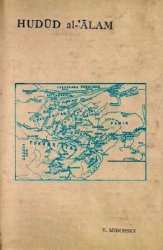 Hudud al-'alam. The Regions of the world: a Persian geography, 372 A.H.-982 A.D. E.J.W. Gibb Memorial Trust 1982 Format: PDF Size: 37,8 mb Quality: Good Language: English
 
 The Cambridge Economic History of the Greco-Roman World The Cambridge Economic History of the Greco-Roman World 
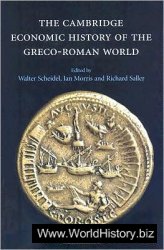 Author: Walter Scheidel (Editor), Ian Morris (Editor), Richard P. Saller (Editor) The Cambridge Economic History of the Greco-Roman World Cambridge University Press 2008 Pages: 958 ISBN: 978-0521780537 Language: English Size: 26.3 mb Format: PDF In this, the first comprehensive one-volume survey of the economies of classical antiquity, twenty-eight chapters summarise the current state of scholarship in their specialised fields and sketch new directions for research. The approach taken is both thematic, with chapters on the underlying determinants of economic performance, and chronological, with coverage of the whole of the Greek and Roman worlds extending from the Aegean Bronze Age to Late Antiquity. The contributors move beyond the substantivist-formalist debates that dominated twentieth-century scholarship and display a new interest in economic growth in antiquity. New methods for measuring economic development are developed, often combining textual and archaeological data that have previously been treated separately. This important work represents a major advance in our understanding of the economic expansion that made the civilisation of the classical Mediterranean world possible.
 
 Ancient Food Technology Ancient Food Technology 
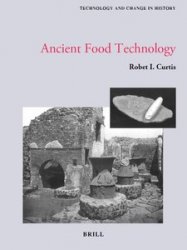 Author: R. Curtis Ancient Food Technology (Technology and Change in History) Brill Academic Publishers 2000 541 Format: Pdf Size: 33,1 MB Language: English This text discusses innovations in food processing and preservation from the palaeolithic period through to the late Roman Empire. It considers the integral role food technology played in the political, economic, and social fabric of ancient society.
 
 Warfare in the Classical World Warfare in the Classical World 
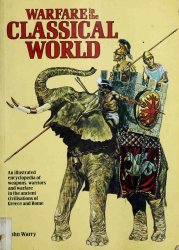 Author: John Gibson Warry Warfare in the Classical World (A Salamander book) University of Oklahoma Press 1980 Format: PDF Pages: 228 Language: English Size: 60.2 MB This superbly illustrated volume traces the evolution of the art of warfare in the Greek and Roman worlds between 1600 B.C. and A.D. 800, from the rise of Mycenaean civilization to the fall of Ravenna and the collapse of the western Roman Empire. John Warry tells of an age of great military commanders such as Alexander the Great, Hannibal, and Julius Caesar - men whose feats of generalship still provide material for discussion and admiration in the military academies of the world. Rich illustrations of soldiers in uniform, equipment, weapons, warships, siege machines, war elephants, and more are accompanied by extensive captions. The text is complemented by a running chronology, 16 maps, 50 newly researched battle plans and tactical diagrams, and 125 photographs, 65 of them in color.
 
 Heroes and Heroines of Greece and Rome Heroes and Heroines of Greece and Rome 
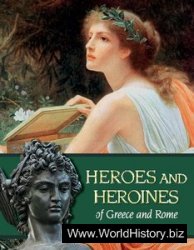 Author: Marshall Cavendish Heroes and Heroines of Greece and Rome Marshall Cavendish Corporation 2001 ISBN: 076147952X Language: English Pages: 320 Format: PDF Size: 54,44 МБ This book explores many heroes and heroines of the Greek and Roman civilizations.
 
 Swords of the Viking Age Swords of the Viking Age 
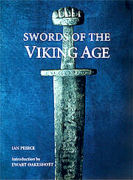 Swords of the Viking Age Author: Ian Peirce 2002 Pages: 160 Format: PDF (OCR) Size: 30,3 MB Language: English
 
 Time Frame AD 200-600 - Empires Besieged Time Frame AD 200-600 - Empires Besieged 
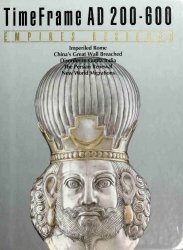 Author: Collective Time Frame AD 200-600 - Empires Besieged Time-Life Books 1988 Format: PDF Pages: 183 Language: English Size: 43.1 MB Includes material on the Sassanids of Persia, the Guptas of India, the Moche of Peru, and the Zapotecs of Mexico.
 
 The Oxford Handbook of the Archaeology of the Levant: c. 8000-332 BCE The Oxford Handbook of the Archaeology of the Levant: c. 8000-332 BCE 
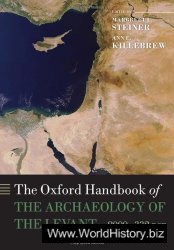 Author: Margreet L. Steiner (Editor), Ann E. Killebrew (Editor) The Oxford Handbook of the Archaeology of the Levant: c. 8000-332 BCE (Oxford Handbooks) Oxford University Press 2014 Format: epub Size: 13.6 Mb Language: English This Handbook aims to serve as a research guide to the archaeology of the Levant, an area situated at the crossroads of the ancient world that linked the eastern Mediterranean, Anatolia, Mesopotamia, and Egypt. The Levant as used here is a historical geographical term referring to a large area which today comprises the modern states of Israel, Jordan, Lebanon, western Syria, and Cyprus, as well as the West Bank, Gaza, and the Sinai. Unique in its treatment of the entire region, it offers a comprehensive overview and analysis of the current state of the archaeology of the Levant within its larger cultural, historical, and socio-economic contexts. The Handbook also attempts to bridge the modern scholarly and political divide between archaeologists working in this highly contested region. Written by leading international scholars in the field, it focuses chronologically on the Neolithic through Persian periods -- a time span during which the Levant was often in close contact with the imperial powers of Egypt, Anatolia, Assyria, Babylon, and Persia. This volume will serve as an invaluable reference work for those interested in a contextualised archaeological account of this region, beginning with the tenth millennium BCE 'agricultural revolution', until the conquest of Alexander the Great that marked the end of the Persian period.
 
 A Dictionary of Jewish Palestinian Aramaic of the Byzantine Period A Dictionary of Jewish Palestinian Aramaic of the Byzantine Period 
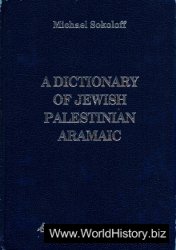 Author: Michael Sokoloff A Dictionary of Jewish Palestinian Aramaic of the Byzantine Period Bar-Ilan University Press 1992 Format: PDF Size: 44,8 МБ Language: English Pages: 832 From the third to the seventh century A.D., the Jews of Palestine used Aramaic as their primary spoken and written language. This dialect has been of considerable interest to Christian scholars, and some have argued that it is the closest dialect to the Aramaic which Jesus would have spoken. Dictionary of Jewish Palestinian AramaicHebrew was used in the first century both in a colloquial form, close to what is found in the Mishnah, as well as in a literary form, close to what is found in the Hebrew documents discovered at Qumran. There is some evidence to suggest that Aramaic was also used with two different “registers,” a literary dialect and a colloquial dialect. The colloquial Aramaic dialect is probably best represented in the Jewish Palestinian Aramaic (JPA) of the Palestinian Talmud and Midrashic stories. Whether Jesus taught mainly in Hebrew or in Aramaic, the dialect of Jewish Palestinian Aramaic recorded in post-Mishnaic sources is a major cultural and linguistic storehouse for our knowledge of New Testament times.
 
 The British Museum Dictionary of Ancient Egypt The British Museum Dictionary of Ancient Egypt 
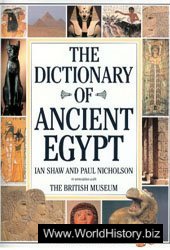 The British Museum Dictionary of Ancient Egypt Author: Ian Shaw, Paul T. Nicholson The American University in Cairo Press 2002 Pages: 328 Format: PDF Quality: Good Language: English Size: 127 mb This successful and highly-esteemed British Museum reference work is now republished in a new pocket-sized edition. This authoritative illustrated dictionary provides clear explanations and descriptions of the important ideas, events and personalities throughout four thousand years of Egyptian civilization. More than 600 extensively cross-referenced and comprehensively-indexed A-Z entries provide detailed information on all aspects of ancient Egypt and Nubia during the pharaonic and Graeco-Roman periods. Each entry is followed by a bibliography. The dictionary is lavishly illustrated throughout with photographs, line drawings, site plans and maps.
 
 The greatness that was Babylon; a sketch of the ancient civilization of the Tigris-Euphrates Valley The greatness that was Babylon; a sketch of the ancient civilization of the Tigris-Euphrates Valley 
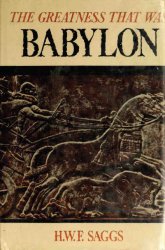 The greatness that was Babylon; a sketch of the ancient civilization of the Tigris-Euphrates Valley New York, Hawthorn Books, Inc; First Edition edition Author:Saggs, H. W. F 1962 Language:English Format:pdf Size:123 Mb A sketch of the ancient civilization of the Tigris-Euphrates valley "And a mighty angel took up a stone like a great millstone, and cast it into the sea, saying: Thus with violence shall that great city Babylon be thrown down and shall be found no more at all.". REVELATIONS XVIII : 21 Splendor and degradation are the marks; that centuries have placed upon the ancient land of Babylon. Its history has been too often neglected because of the many enigmas that have baffled scholars since the time of its fall.
 
 Late Roman Towns in Britain: Rethinking Change and Decline Late Roman Towns in Britain: Rethinking Change and Decline 
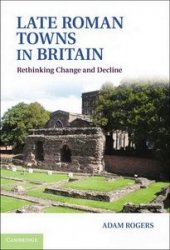 Late Roman Towns in Britain: Rethinking Change and Decline Author: Adam Rogers 2011 ISBN: 1107008441 Pages: 250 Language: English Format: PDF (E-book) Size: 6 MB In this book, Adam Rogers examines the late Roman phases of towns in Britain. Critically analysing the archaeological notion of decline, he focuses on public buildings, which played an important role, administrative and symbolic, within urban complexes. Arguing against the interpretation that many of these monumental civic buildings were in decline or abandoned in the later Roman period, he demonstrates that they remained purposeful spaces and important centres of urban life. Through a detailed assessment of the archaeology of late Roman towns, this book argues that the archaeological framework of decline does not permit an adequate and comprehensive understanding of the towns during this period. Moving beyond the idea of decline, this book emphasises a longer-term perspective for understanding the importance of towns in the later Roman period.
 
 The Roman Navy: Ships, Men & Warfare 380 BC-AD 475 The Roman Navy: Ships, Men & Warfare 380 BC-AD 475 
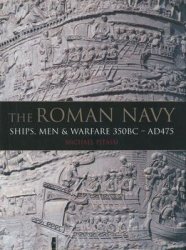 Author: Michael Pitassi The Roman Navy: Ships, Men & Warfare 380 BC-AD 475 Seaforth Publishing ISBN: 1408844362 2012 Format: EPUB Pages: 224 Size: 21 Mb Language: English The Roman Navy was remarkable for its size, reach and longevity. As significant as the Royal Navy was to the British Empire in the nineteenth century, the Roman Navy was crucial to the extraordinary expansion of Imperial power and for its maintenance over a period of more than 800 years. The fabric and organization of this maritime force is at the core of this new book.At the height of its power the Roman Navy was, at least in numerical terms, the largest maritime force ever to have existed. It employed tens of thousands of sailors and maintained and fought fleets of ships larger than any forces since. In these pages the author looks at all the aspects of the Navy in turn. Shipbuilding, rigs and fittings, and shipboard weaponry are covered as are all the principal ship from the earliest types to the very last. The command structure is outlined, as are all aspects of the crews' lives, their recruitment, terms of service, training and uniforms.
 
 Kingdoms of the Celts - A History and Guide Kingdoms of the Celts - A History and Guide 
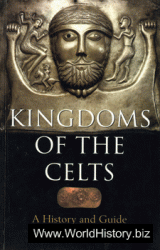 Author: John King Kingdoms of the Celts - A History and Guide Blandford Pr 1999 Format: PDF Pages: 256 Language: English Size: 94 MB With their vigorous and distinctive culture -- rich in music, art, and language -- the Celts have captured the imagination of people throughout the world. But who exactly are they, where were their earliest kingdoms, and how did their religious and social practices develop? This "guidebook" to Celtic history traces in fascinating detail their origins in Europe (including the name "Celt" itself); historical descriptions of their appearance and behavior; their social structure; and their migration from La Tene, Switzerland, to the British Isles. Portraits of warrior kings and queens, the legendary, chivalric King Arthur, and the Welsh and Breton royal dynasties vividly capture their personalities and the worlds in which they lived. Throughout, photos and illustrations display artifacts, artwork, and maps, as well as Celtic poetry and lively excerpts from historical accounts.
 
 The Land of the Etruscans The Land of the Etruscans 
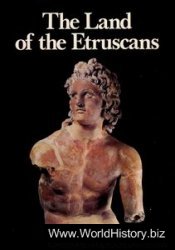 The Land of the Etruscans Author: Marisa Bonamici Scala Books 1985 ISBN-13: 978-0935748598 Pages: 98 Language: English Format: PDF Size: 90 MB Etruscan civilization is the modern name given to a civilization of ancient Italy in the area corresponding roughly to Tuscany, western Umbria, and northern Lazio. The ancient Romans called its creators the Tusci or Etrusci. Their Roman name is the origin of the terms Tuscany, which refers to their heartland, and Etruria, which can refer to their wider region. In Attic Greek, the Etruscans were known as (Tyrrhenoi), earlier Tyrsenoi, from which the Romans derived the names Tyrrheni (Etruscans), Tyrrhenia (Etruria), and Mare Tyrrhenum (Tyrrhenian Sea). The Etruscans called themselves Rasenna, which was syncopated to Rasna or Rasna, earlier T'rasena,[citation needed] whence come the Roman and Greek names, prompting some to associate them with the Egyptian Teresh (Sea Peoples). The word may also be related to the Hittite Taruisa...
 
 Roman Silver Coins Roman Silver Coins 
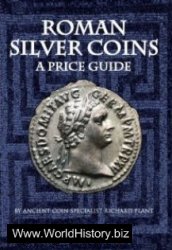 Roman Silver Coins Rotographic Publications Author: Richard Plant 2006 Pages: 100 Format: PDF Size: 4 mb Language: English For the first time, the most commonly encountered silver Roman coins can be inexpensively identified and some idea of value can be gained. Whether you are setting out to form a collection of every emperor or are already an experienced Roman Coin collector, you will not be able to put this book down! The line drawings of most obverse types mean that the legend is clear and readable in the book, and it makes a great aid to identification, as does the alphabetical list of emperors/empresses in the back of the book. This book includes an identification guide for republican coins, instructions on cleaning Roman silver coins and a list of Roman mint town mintmarks. It also includes an alphabetical list of Emperors/Caesars/Empresses and information of Roman coin grading. The book is ordered chronologically, and with the introduction of different coin types clearly mentioned, together with some historical notes, it also gives an easy to follow explanation of the Roman silver coinage and how it changed over 750 years.
|
|

























 World History
World History









